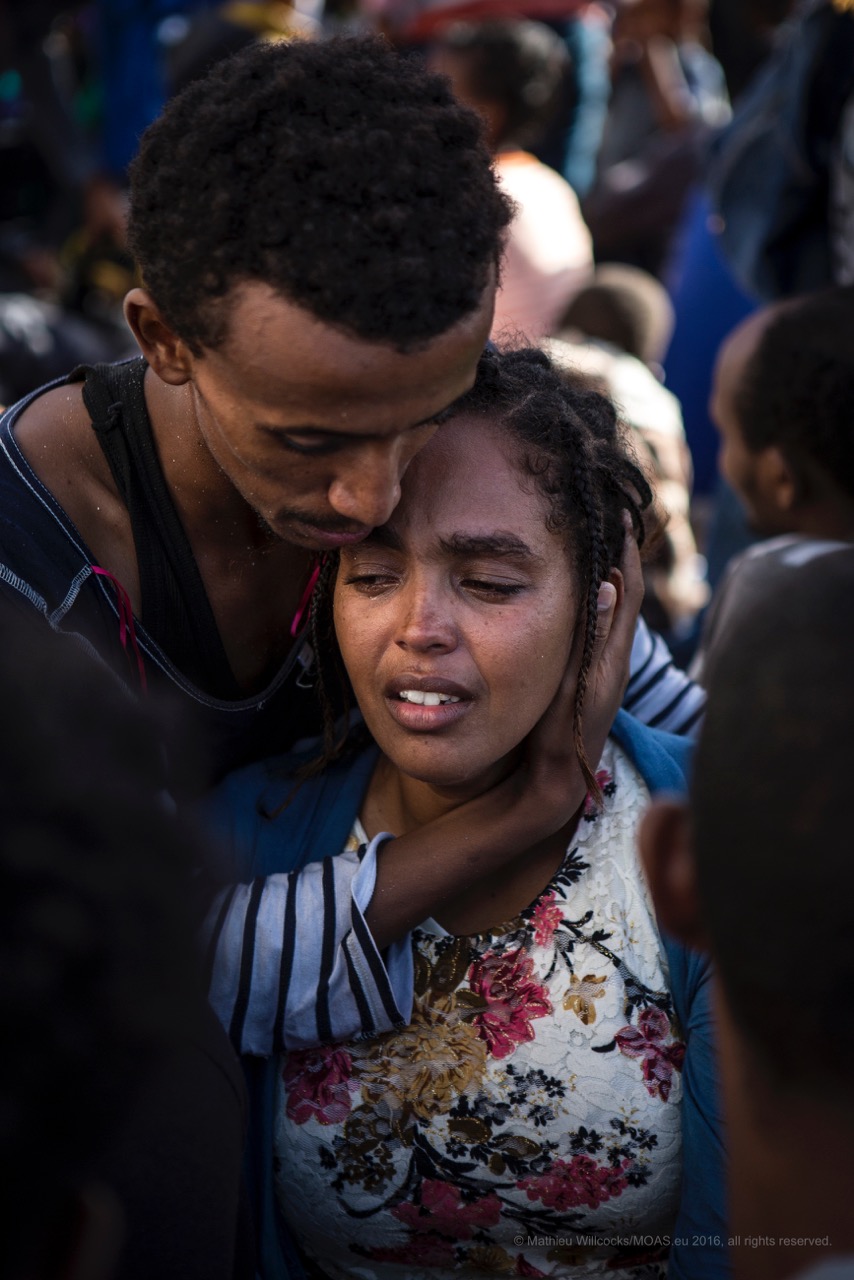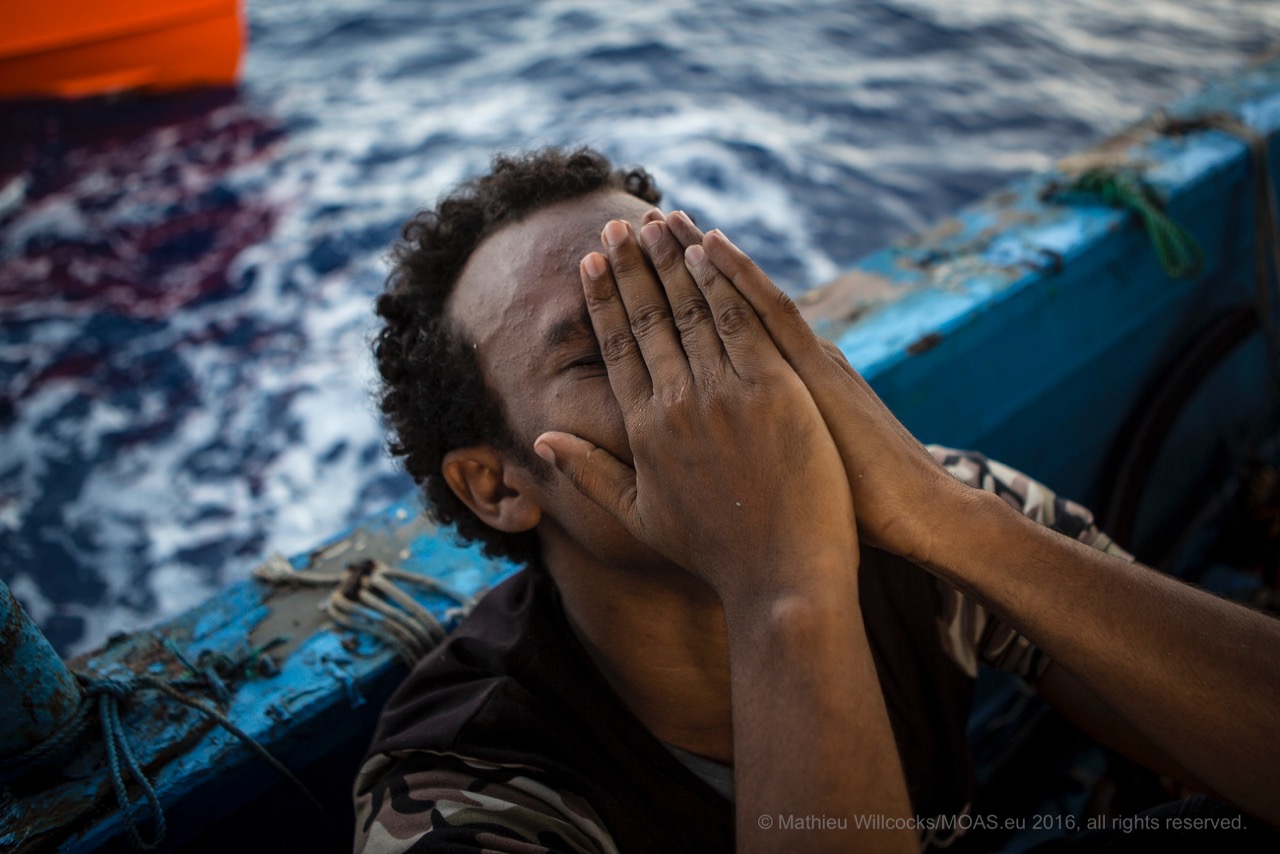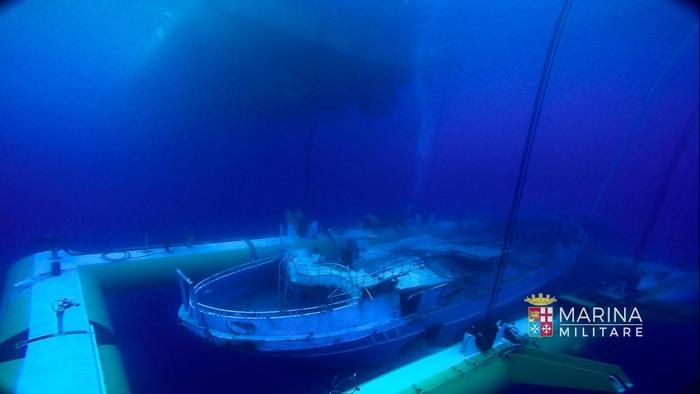A photographer who was onboard a migrant vessel from which four young Eritrean men were discovered dead said people inside the vessel’s hold were packed so tightly it would have been easy for survivors not to realise that they had died.
“People are packed so tightly in the hold,” said Migrant Offshore Aid Station (MOAS) photographer Mathieu Willcocks, “they wouldn’t realise if someone was simply sleeping on their friend’s shoulder or unconscious.”
Two other men were found in critical condition. One was given CPR by a search-and-rescue crew member and an emergency doctor on board and stabilised enough to be evacuated with an Italian Navy helicopter. The other migrant was stabilised by emergency staff and is still on the Responder.
The bodies were found in three separate compartments of the small wooden vessel from which 352 migrants were rescued early on Tuesday some 17miles off the Libyan coast by MOAS.
The rescued included 150 women and 20 children, the majority being Eritrean.

Photo: Matthieu Willcocks/MOAS
The MOAS vessel, Responder, spotted the heavily over-crowded wooden boat on the radar at 3:50am. At 4:30am the crew was in sight of the boat but it was still pitch dark.
At 05:00am a fast rescue launch was lowered into the water and the recovery operation began.
Many of the survivors cried and screamed as the bodies were brought on the Responder and into the morgue.

Photo: Matthieu Willcocks/MOAS
Tuesday’s deaths are not a new phenomenon. 2,942 migrants have died in the Mediterranean in 2016 alone, as of 11 July 2016.
So far, 2,521 migrants have died along the Central Mediterranean route as of 10 July 2016, making up approximately 85% of all deaths in the region.
Since the revolution, Libyan smugglers have been taking increasing risks with the lives of migrants and asylum seekers, putting huge numbers of people in unseaworthy boats.
Typically, there is a price differential that determines whether a migrant stays on the deck of the vessel or in the hold. The ones in the hold are the ones who can afford to pay the least. Current prices on the coast of Tripolitania stand at between LYD1,000 and LYD 2,000 per person (roughly $250 to $500).
Those who are put in the hold are cramped in poorly ventilated chambers where the engine fumes further poison the air. Just under a year ago, 52 bodies were pulled from the hold of a wooden boat some 30 miles north of Libya.
Moreover, many of the people who died in what is still considered to be the worst migrant disaster in the Mediterranean on April 18, 2015 went down with the vessel, trapped in the hold.
Towards the end of June the Italian Navy recovered the vessel at the end of a yearlong operation in which specialised teams identified and brought to the surface the 20-metre wreck from a depth of about 375metres, 85 nautical miles northeast of the Libyan coast.

A photo of the 20-metre wreck that was recovered by the Italian Navy at the end of June following a year-long operation. Photo: Italian Navy.
It is estimated that there are between 250 and 300 bodies inside the wreck. A forensics team in Italy is currently carrying out an investigation on the bodies. The exact number of people who perished may never be known. It is known that only 28 people made it out alive and that 169 bodies were recovered, not counting the ones that are currently being looked at by Italian investigators.



